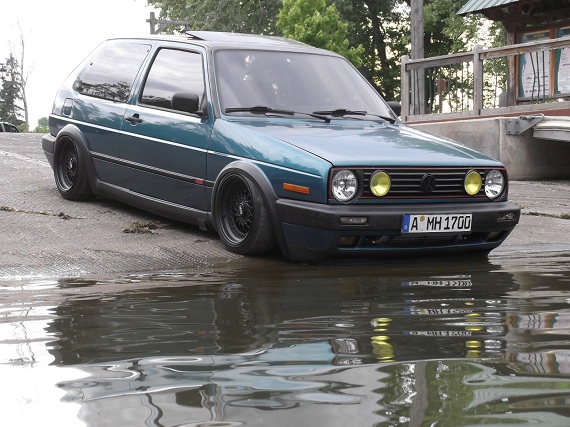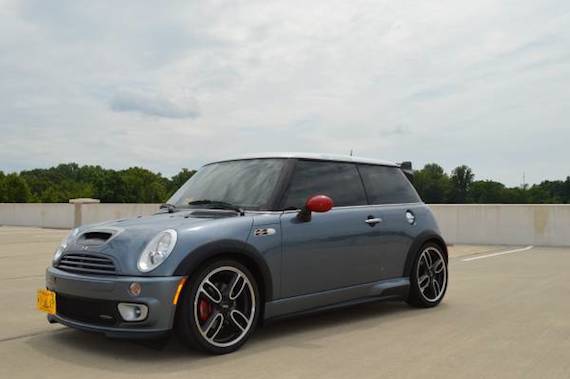Please join me in welcoming Pablo Deferrari as a Guest Contributor here at German Cars For Sale Blog. Pablo is the founder of flüssig, a journal celebrating the Porsche 924, 928, 944 and 968. Pablo will check in with us from time to time and offer up his vast knowledge of all things Porsche, in particular the water-cooled variety. Welcome Pablo!
If you stormed into any Porsche dealer, walked up to a salesman, and plunked down $75,845 on his desk demanding a 928, besides being looked at as if you were out of your gourd, you had two choices in 1990; the GT or this car, the S4. The only decision you needed to make was whether you wanted to shift the thing yourself, or have it shift for you, with a little omph, because as of model year 1990, Porsche no longer offered a manual gearbox in the S4. You got the automatic transmission standard. If you had to have a manual with your V8, you were shown the GT.
This was just one of few changes in this year’s S4, and you weren’t going to be disappointed with the rest.
The base price of $74,545 plus a $1,300 gas-guzzler tax was exactly the same for both the GT and the S4. Porsche was holding down their prices for 1990 with the hopes that the dollar would rebound. Well, it didn’t, and executives in Stuttgart began chewing off their fingernails. But that wasn’t your problem; in fact, it was to your advantage as a buyer of this Grand Tourer.
The S4 had been around since 1987 when it replaced the outgoing 1986 928S known by connoisseurs as the S3. What I find curious about the S4 is that it had the same 5.0 liter, 32-valve lump putting out 320hp (DIN) at 6000rpm and 316.9 lb-ft of torque at 3000rpm throughout its life from the first one in 1987 until the last S4 made in 1991. It even kept the compression ratio the same at 10,0:1. Australia was the exception, their engine put out 300hp (DIN) through 1989. And since it was the same mill, Porsche used the same engine codes; M28/41 for the manual gearbox and M28/42 for the automatic.
Never one to leave things alone, Porsche, in their typical ethos of evolution and refinement, made lots of subtle changes throughout the model’s life in other areas. Since we’re talking about this particular 1990 model, let’s get a little more focused. For example; dual airbags made an appearance in the 928 for the first time, it had the RDK (Reifendruckkontrolle), or TPMS (Tire Pressure Monitoring System), that made its debut in the legendary 959, twin outlet muffler like the GT’s, and all VIN tags were deleted from the body panels. The “Design 90†wheel (that’s on this car) was also available as an option for the first time on the S4 and standard on the GT. Known internally as option M400 Cast Wheel Club-Sport 7,5/9J x 16, the same wheels used on the factory prototype 1987 928 Club-Sport model. The slotted design “Manhole Covers†or “Gullideckel†wheels in 7/8J x 16 came standard on the S4.
Another technological marvel that was borrowed from the 959 made its debut in the ’90 S4: PSD (or Porsche Sperrdifferential). This system was nothing short of genius. I could go to great drool-inducing lengths to explain it in its entirety, but I’ll spare you and myself from committing Hari-kari. The short of it? It’s a one way variable ratio limited-slip differential relying on the ABS sensors to advise the computer when there’s traction loss, cornering, or braking variations. The computer then fires off synapses in nanoseconds using a hydraulic clutch to compress a set of multi-discs and transfer torque to the slowest turning wheel. It can variate the lock-up from 0 to 100% to compensate and save yourself from looking like a fool. I’ll sum it up in five words; electronically controlled limited slip differential. There.
Right, performance.
Naught to 60 in 6.3 seconds bringing you back to naught with massive four-piston Brembos in a distance of 135 feet. And then you decide that what you really wanted to do instead was to put the hammer down, run the Mercedes guts in the transaxle through the 4-speeds and take her all the way up to a claimed 165mph. Not bad for a car nearly weighing in at 3,700 lbs. Imagine if you decided to fiddle with the 2.54 final drive ratio, trick the computer to give you 200 more revs and swap in the hotter cams from the GT. On second thought, don’t. Leave this one alone. She’s perfect just the way she is. They only brought in 455 GTs and S4s to the US and Canada in 1990, and she’s one of them, making her very special indeed.




